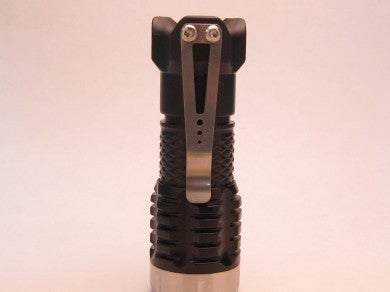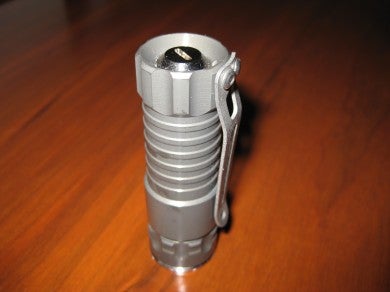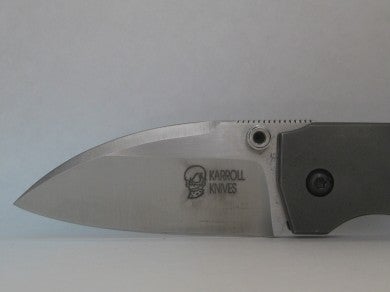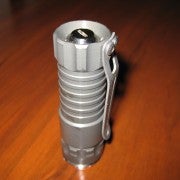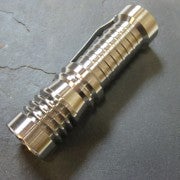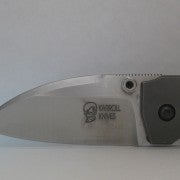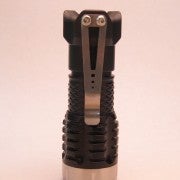For knives and other gear, why go high-end?
Tony Sculimbrene 07.10.13
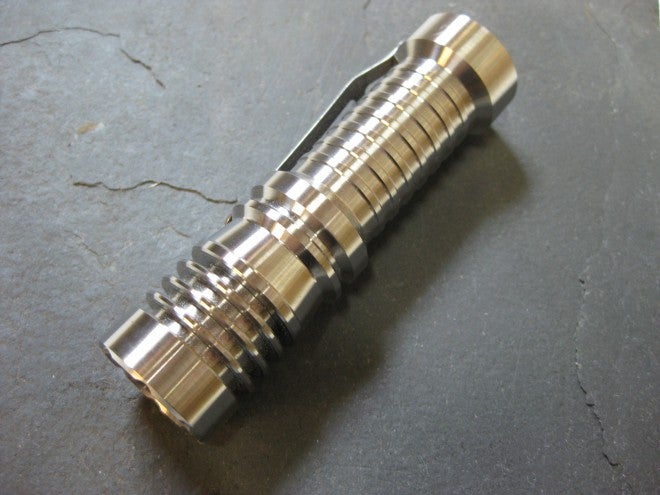
Having just laid out the whats and whys of midtech knives, I thought it might be a good time to explain why you should be looking at high-end gear in the first place.
Gear is really great right now. The leading edge of gear technology moves almost daily. We are getting new, high-tech steels and flamethrowing emitters at a rate inconceivable only a few years ago. Stuff like this gem from TorchLAB and Oveready:
The bang for your buck has never, ever been better. So with unprecendented value propositions on the market (stuff like the Zebralight SC600, Mk. II, review found here), why would someone opt to pay the big bucks for a custom or midtech piece of gear? There are a few answers, some of which I am not all that interested in, but there are a couple of things that you can only get buying high-end stuff and, in my opinion, it is definitely worth the increase in price.
Crazy Materials
Carbon fiber is for the hoi polloi. Lightning Strike Carbon Fiber, Zirconium, and Superconductor materials are where it is at in terms of premium stuff. G10? Try C-Tek. S30V? Eh…how about SM100 or stainless Damascus? Hard Anondized Aluminum? Pssshhh…how about Timascus or Mokume Gane? Can’t find that light in the dark? Cover it in tritium emitters. Part of the appeal of high-end gear is the use of high-end materials. There are all sorts of materials out there that aren’t productive to use on a large scale either because of the difficulty machining them or because of their cost. But these materials can and do offer more than just exclusivity and bling. SM100 is as hard as ZDP-189, incredibly tough (it has shape memory properties), and virtually rust proof (there is no iron in SM100, here is some more about this wonder blade material). Similarly, titanium offers much greater strength than aluminum with only slightly more weight. There is a point beyond which the materials are useful though. If you’re looking at knives with jewels in the thumbstud you’ve reached that point.
Amazing Mechanisms
Part of the fascination with gear, especially pocket sized stuff like knives and flashlights, is a fascination with the engineering involved. We are suckers for innovation, and you will find massive heaps of innovation in the world of high-end gear. The Piston Drive activation method was developed by Don McLeish and Peter Granesee (below is the Granesee version) for his stunning array of flashlights, and then years later Nitecore started using a variation of it.
Similarly, Kit Carson’s simple and elegant flipper opening method first appeared on one of his customs and then later filtered down into production blades. The innovation continues. Matchbox Instruments HF-R uses a truly groundbreaking flashlight UI, and it’s something I imagine will become an option on many mass production lights in the future.
The Real Reasons Why
Production flashlights have tons of output nowadays. They have lots of modes and a wide variety of emitters (high quality emitters used to be rare, found only in customs, but that has changed). The real functional upgrades you get with custom lights come in terms of the UI and most noticeably, beam quality. The McGizmo Haiku, pictured at the start of this article, has a very balanced, even beam.
The hotspot (the bright point in the middle) blends seamlessly with the spill (the slightly dimmer halo of light around the hotspot). This is not just pretty. It is functional too. The Haiku allows you to light up things far away with a concetrated hotspot and work close up with a broad spill. This sort of balanced beam is very difficult to do, a combination of the right emitter, the right reflector texturing, and most importantly the right reflector shape. A beam of this quality level simply does not exist in the production world. Its not just that it is pretty AND rare — it is also very, very useful.
Similarly, production knives do fit and finish quite well — see for example, the ZT0560. But what no production knife can do that customs do in spades is a quality grind. The grind on my EDMW from Steve Karroll is a masterpiece.
The S35VN stock is uber thick, easily the thickest I have ever seen on a folding knife, but it comes to an incredibly fine edge. The entire blade geometry works in service to this edge. The results are stunning. This knife cuts forever and needs very little care and maintenance. Stropping is enough to keep in top shape for a long, long time. You can reprofile a production knife, something that is difficult to do, but even then you cannot REALLY change the entire blade geometry. Grinds are the one place that humans still outclass machines by a large margin in the knife world, and this represents the true reason to by a custom knife.
Conclusion
High-end stuff is expensive, no doubt. It is not necessary to buy high-end stuff to get functional tools, but there is a difference. The difference between high-end and production may be getting smaller by the day, as companies like ZT and Surefire push the limits of what production gear is capable of, but that difference is important. Moreso than the rare bauble, custom stuff is better in functional and important ways. Custom lights offer superior UI and beam profiles while custom knives offer interesting mechanisms and otherworldly grinds.
If the difference in price was many hundreds of thousands of dollars, like the difference between an ecobox car and a high-end sports car, then custom gear probably wouldn’t warrant the expense, but in reality, all but the most elite custom gear is a few hundred dollars more. That may sound like a lot, but consider what craftsmen in the 1890s spent on tools. A good block plane cost “two weeks pay.” And while you may not use this custom gear as part of your job, you are getting the best of the best, made by the hands of master and conceived of by the mind of an innovator. That, to me, is worth quite a bit.
